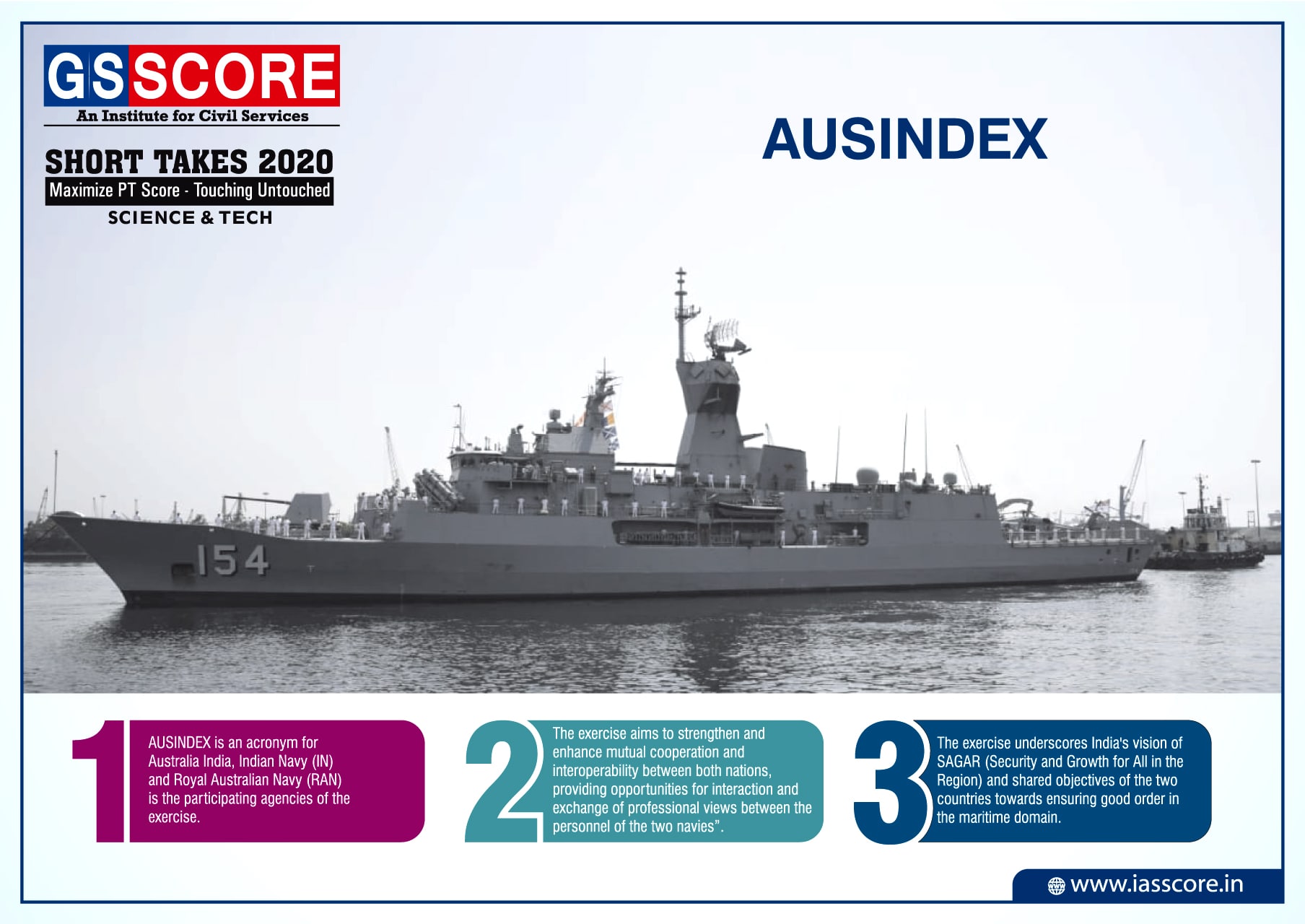Polity: Revision test
New State of Matter Discovered

Thermal Battery Plant

Erode Turmeric

AUSINDEX

MH 60R Multi Mission Helicopters

Miscellaneous
1. CITIZEN CHARTER
- The Citizens’ Charter is an instrument which seeks to make an organization transparent, accountable and citizen friendly.
- A Citizens’ Charter is basically a set of commitments made by an organization regarding the standards of service which it delivers.
Benefits of Citizen Charter
- It enhances accountability by providing citizens with a clear understanding of service delivery standards, including timetables, user fees for services, and options for grievance redress.
- It increases organizational effectiveness and performance by making a public commitment to adhere to measurable service delivery standards.
- It creates a way for both internal and external actors to objectively monitor service delivery performance.
- It creates a more professional and client-responsive environment for service delivery.
- It fosters improvements in staff morale. It decreases opportunities for corruption and graft by increasing transparency and educating citizens about their rights.
- It increases government revenues by ensuring that the money citizens pay for services goes into the government’s coffers (and not into employees’ pockets).
Problems Faced in Implementing the Charters
As pointed out, the Citizens’ Charters initiative in India had started in 1997 and the Charters formulated are in a nascent stage of implementation. Introduction of a new concept is always difficult in any organization. Introduction and implementation of the concept of Citizens’ Charter in the Government of India was much more difficult due to the old bureaucratic set up/procedures and the rigid attitudes of the work force. The major obstacles encountered in this initiative were:
- The general perception of organizations which formulated Citizens’ Charters was that the exercise was to be carried out because there was a direction from the top. The consultation process was minimal or largely absent. It thus became one of the routine activities of the organization and had no focus.
- For any Charter to succeed the employees responsible for its implementation should have proper training and orientation, as commitments of the Charter cannot be expected to be delivered by a work force that is unaware of the spirit and content of the Charter. However, in many cases, the concerned staff were not adequately trained and sensitized.
- Sometimes, transfers and reshuffles of concerned officers at the crucial stages of formulation/implementation of a Citizens’ Charter in an organization severely undermined the strategic processes which were put in place and hampered the progress of the initiative.
- Awareness campaigns to educate clients about the Charter were not conducted systematically.
- In some cases, the standards/time norms of services mentioned in Citizens’ Charter were either too lax or too tight and were, therefore, unrealistic and created an unfavorable impression on the clients of the Charter.
- The concept behind the Citizens’ Charter was not properly understood. Information brochures, publicity materials, pamphlets produced earlier by the organizations were mistaken for Citizens’ Charters.
Steps to Improve Citizen Charters
- Internal restructuring should precede Charter formulation: As a meaningful Charter seeks to improve the quality of service, mere stipulation to that effect in the Charter will not suffice. There has to be a complete analysis of the existing systems and processes within the organization and, if need be, these should to be recast and new initiatives adopted.
- One size does not fit all: This huge challenge becomes even more complex as the capabilities and resources that governments and departments need to implement Citizens’ Charters vary significantly across the country. Added to these are differing local conditions. The highly uneven distribution of Citizens’ Charters across States is clear evidence of this ground reality.
- Involve customers in the creation of guarantees, standards, redress policies, complaint systems, and customer service agreements: This is necessary to know what is important to the customer. It is prudent not to assume what the customer wants. Customer surveys are useful here, but face-to-face contact with customers is even more important. Customer councils and different types of customer voice tools can be used for this.
- Educate customers about the services that an organization provides, so they will have realistic notions of what is possible and will understand their own responsibilities: Often services won’t work unless customers uphold their end of the deal. e.g., tax agencies can’t send speedy refunds if taxpayers don’t fill out their returns completely and accurately.
- Firm commitments to be made: Citizens’ Charters must be precise and make firm commitments of service delivery standards to the citizens/consumers in quantifiable terms wherever possible.
- Redressal mechanism in case of default: Citizens’ Charter should clearly lay down the relief which the organization is bound to provide if it has defaulted on the promised standards of delivery.
- Periodic evaluation of Citizens’ Charters: Every organization must conduct periodic evaluation of its Citizens’ Charter preferably through an external agency. This agency while evaluating the Charter of the organization should also make an objective analysis of whether the promises made therein are being delivered within the defined parameters.
- Benchmark using end-user feedback: Systematic monitoring and review of Citizens’ Charters is necessary even after they are approved and placed in the public domain. Performance and accountability tend to suffer when officials are not held responsible for the quality of a Charter’s design and implementation.
- Hold officers accountable for results: All of the above point to the need to make the heads of agencies or other designated senior officials accountable for their respective Citizens’ Charters. The monitoring mechanism should fix specific responsibility in all cases where there is a default in adhering to the Citizens’ Charter.
- Include Civil Society in the process: Organizations need to recognize and support the efforts of civil society groups in preparation of the Charters, their dissemination and also facilitating information disclosures.
Sevottam Model
- Sevottam is a Service Delivery Excellence Model which provides an assessment-improvement framework to bring about excellence in public service delivery.
- The need for a tool like Sevottam arose from the fact that Citizens’ Charters by themselves could not achieve the desired results in improving quality of public services.
- Besides, the absence of a credible grievances redressal mechanism within organizations was also becoming a major impediment in improving service delivery standards.
- Thus, it was felt that unless there is a mechanism to assess the outcomes of various measures, the reform initiatives would not yield the desired results.
- The Sevottam model works as an evaluation mechanism to assess the quality of internal processes and their impact on the quality of service delivery.
- The Sevottam model has three modules.
- The first component of the model requires effective Charter implementation thereby opening up a channel for receiving citizens’ inputs into the way in which organizations determine service delivery requirements. Citizens’ Charters publicly declare the information on citizens’ entitlements thereby making citizens better informed and hence empowering them to demand better services.
- The second component of the model, ‘Public Grievance Redress’ requires a good grievance redressal system operating in a manner that leaves the citizen more satisfied with how the organization responds to complaints/grievances, irrespective of the final decision.
- The third component ‘Excellence in Service Delivery’, postulates that an organization can have an excellent performance in service delivery only if it is efficiently managing well the key ingredients for good service delivery and building its own capacity to continuously improve service delivery.
- An organization which meets Indian Standard 15700:2005 will be entitled for “Sevottam” certification, “Sevottam” being the Indian name for excellence in service delivery. This is known as Charter Mark Scheme.
- Given the largely negative opinion prevalent about the quality of government services in the country, the implementation of “Sevottam” is going to be a challenging exercise.
2. Competition Commission of India (CCI)
- Established on: 14th October 2003 under the Competition Act, 2002
- Headquarter: New Delhi
- Composition: A Chairperson and 6 Members appointed by the Central Government.
- Functions of CCI:
- To eliminate practices having adverse effect on competition, promote and sustain competition, protect the interests of consumers and ensure freedom of trade.
- Give opinion on competition issues on a reference received from any statutory authority, competition advocacy, create public awareness and impart training.
- Powers of CCI:
- Inquire into certain agreements and abuse of dominant position of enterprises likely to have adverse effect on competition.
- Summoning and enforcing the attendance of any person and examining him on oath.
- Requiring the discovery and production of documents, receiving evidence on affidavit.
- In discharge of its functions, the Commission shall be guided by the principles of natural justice and shall have the powers to regulate its own procedure.
3. TRIBUNALS
- The original Constitution did not contain provisions with respect to tribunals. The 42nd Amendment Act of 1976 added a new Part XIV-A to the Constitution. It consists of only two Articles—Article 323 A dealing with administrative tribunals and Article 323 B dealing with tribunals for other matters.
- In pursuance of Article 323 A, the Parliament has passed the Administrative Tribunals Act in 1985. The act authorizes the Central government to establish one Central administrative tribunal and the state administrative tribunals
Central Administrative Tribunal (CAT)
- The CAT is a multi-member body consisting of a chairman and members. Earlier, the CAT consisted of a Chairman, Vice-Chairmen and members.
- With the amendment in Administrative Tribunals Act, 1985 in 2006, the members have been given the status of judges of High Courts. At present (2016), the sanctioned strength of the Chairman is one and sanctioned strength of the Members is 65.
- They are drawn from both judicial and administrative streams and are appointed by the president. They hold office for a term of five years or until they attain the age of 65 years, in case of chairman and 62 years in case of members, whichever is earlier.
- The appointment of Members in CAT is made on the basis of recommendations of a high powered selection committee chaired by a Sitting Judge of Supreme Court who is nominated by the Chief Justice of India.
- After obtaining the concurrence of Chief Justice of India, appointments are made with the approval of Appointments Committee of the Cabinet (ACC).
- The CAT exercises original jurisdiction in relation to recruitment and all service matters of public servants covered by it. Its jurisdiction extends to the all-India services, the Central civil services, civil posts under the Centre and civilian employees of Defence services. However, the members of the defence forces, officers and servants of the Supreme Court and the secretarial staff of the Parliament are not covered by it.
State Administrative Tribunals
- The Administrative Tribunals Act of 1985 empowers the Central government to establish the State Administrative Tribunals (SATs) on specific request of the concerned state governments
- Like the CAT, the SATs exercise original jurisdiction in relation to recruitment and all service matters of state government employees.
- The chairman and members of the SATs are appointed by the president after consultation with the governor of the state concerned.
- The act also makes a provision for setting up of joint administrative tribunal (JAT) for two or more states. A JAT exercises all the jurisdiction and powers exercisable by the administrative tribunals for such states.
- The chairman and members of a JAT are appointed by the president after consultation with the governors of the concerned states.
Air Space Restriction
Context
- Pakistan has extended the ban on use of its airspace till June 15.
- A notice to airmen (NOTAM) informed airlines about the extension of the ban.
About
- In the wake of escalating tension following an airstrike by Indian Air Force in Balakot in February 2019, Pakistan had restricted its airspace for airlines to and from India.
- Several Central Asian airlines as well as those providing connectivity to Europe and the United States from Southeast Asia were forced to cancel their flights due to the ban.
- The ban is contributing to financial losses owing to longer routes, demand of passengers on these routes, increased crew presence and increased fuel costs.
- In a case of Air space violation, a Delhi-bound Georgian aircraft that took off from Karachi was recently intercepted over Gujarat.
- However, on the up side, recently, India granted permission for Pakistan Foreign Minister Shah Mehmood Qureshi’s aircraft to fly over the country for his visit to Male and Colombo. Pakistan too exempted External Affairs Minister Sushma Swaraj to fly directly through Pakistani airspace to attend the SCO meet in Bishkek.
Airspace: In international law, the space above a particular nation’s territory is owned by the government controlling the territory.
- The upper limit of national airspace is not defined by international law. However, under the Outer Space Treaty of 1967, airspace ends where outer space begins, as outer space is declared to be free and not subject to national appropriation
- The treaty, however, did not define the altitude at which outer space begins and airspace ends.
Air sovereignty: It is the fundamental right of a sovereign state to regulate the use of its airspace and enforce its own aviation law. State controls the entry of foreign aircraft into its territory and that person within its territory are subject to its laws
- The principle of airspace sovereignty is established through the Paris Convention on the Regulation of Aerial Navigation (1919) and subsequently by other multilateral treaties.
- Commercial air transport is divided into scheduled air services and nonscheduled flights. Charter flights fall mostly, but not invariably, into the latter category.
- Under the 1994 Chicago Convention, contracting states agree to permit aircraft registered in the other contracting states and engaged in commercial nonscheduled flights to fly into their territory without prior diplomatic permission and, moreover, to pick up and discharge passengers, cargo, and mail, but in practice this provision has become a dead letter.
Prohibited airspace: It refers to an area of airspace within which flight of aircraft is not allowed, usually due to security concerns. It is one of many types of special use airspace designations and is depicted on aeronautical charts with the letter "P" followed by a serial number.
Restricted airspace: Different from prohibited airspace, in it the entry is typically forbidden at all times from all aircraft and is not subject to clearance from ATC or the airspace's controlling body.
How closure of Airspace affects airlines?
- Globally, commercial airlines generally fly from east to west. All airlines seek to fly a straight route so as to save fuel. This is possible only when the airspace over a country, which is the sovereign right of that country, is open and be safe to fly over.
Every country marks out several entry and exit points for various airlines to use. When these entry and exit points are shut, airlines need to consider alternative routes, which involve flying longer or stopping at an intermediate point before reaching their final destinations.
India an Observer in CTBTO
Context
- The Comprehensive Nuclear-Test-Ban Treaty Organization (CTBTO) has invited India to become an "Observer" with access to International Monitoring System data, so it can take an informed decision on ratifying a much-debated nuclear disarmament treaty.
About
- Stating its reservations with the treaty, India has not signed CTBT till date.
- With changing nature of the organization, renewed efforts are made to get India onboard.
Benefits of being an observer:
- Informed decision:It will allow India to attend CTBTO meeting, observe how the organization works, and accordingly take the time needed to make the decision.
- Access to information: The CTBTO runs the International Monitoring System (IMS), which can detect nuclear tests anywhere across the world. Being an observer, India would get access to data from the IMS. When complete,
- IMS will consist of 337 facilities (321 monitoring stations and 16 radionuclide labs) located in 89 countries.
- It can detect even small nuclear explosions using seismology, hydroacoustics , infrasound and radionuclide technology.
- The IMS also helps in warning of earthquakes, tsunamis and volcanic ash, and identifies plane crash sites.
- Symbolism: Being an observer will not change India‘s status with respect to the CTBT. It only gives the advantage of following what’s happening, learning what China is doing in the organization, and where the US comes in. Among the non-signatory, Pakistan too is an observer.
India’s apprehensions with CTBT
- Discrimination: India claims that the CTBT is discriminatory because it favours "five nuclear weapon states"- the United States, United Kingdom, China, France and Russia - when it comes to fulfilling obligations for eliminating nuclear weapons.
- India wants the CTBT to have a clause on complete nuclear disarmament in a time-bound manner because there are technological differences between the 'have' and 'have not' countries.
- India is concerned about the likelihood of those already possessing nuclear weapons upgrading their arsenals through sub-critical and laboratory simulated testing.
Comprehensive Nuclear-Test-Ban Treaty Organization (CTBTO)
- It was founded in 1996 to promote the Treaty so that it can enter into force.
- It also establishes a verification regime to monitor adherence to the Treaty.
- The CTBT verification includes
- International Monitoring System (IMS),
- International Data Centre (IDC)
- On-site inspections (OSI).
- It constantly monitors the planet for nuclear explosions and shares its findings with Member States.
India Elected to INCB
Context
- India’s Jagjit Pavadia was re-elected to the UN’s International Narcotics Control Board (INCB) with the highest margin.
About
- Pavadia has been a member of the INCB since 2015. With current re-election, she will remain a member till 2025.
- Her win provides more global space, hence more clout.
International Narcotics Control Board
- It is the independent and quasi-judicial monitoring body for the implementation of the United Nations international drug control conventions.
- It was established in 1968 in accordance with the Single Convention on Narcotic Drugs, 1961.
- It consists of 13 members who are elected by the ECOSOC.
- Each of the 13 members is elected for a five-year term and serves in their personal capacity, not as government representatives.
- It is headquartered in Vienna.
- It ensures adequate supplies of narcotics are available for medical and scientific purposes It also publishes an annual report providing a comprehensive survey of the drug control situation in various parts of the world to ECOSOC through the Commission.


